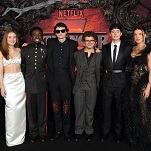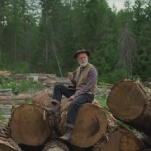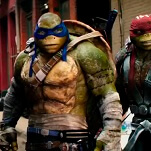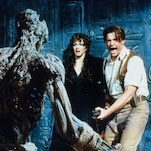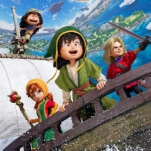Each chapter starts with a question a child might ask, like “Who was the first person?” “Why do we have night and day?” and “When and how did everything begin?” Dawkins then lays out a series of tales that seek to answer those questions, giving equal weight to ancient Greek or Egyptian myths as he does to stories from the Bible, which is to say none at all. His premise is that the ways ancient peoples explained the setting of the sun, earthquakes, and rainbows are entertaining tales, but that the actual science behind these things is far more magical because it’s real.
In his romp through physical science, chemistry, biology, astrophysics, and cosmology, it can be hard to tell what age group Dawkins is actually writing for. He explains simple concepts like atoms, but then gets deep into a discussion of red shifts and standard candles to discuss how scientists determine the age of stars. Unsurprisingly, the chapters where he delves into evolutionary biology are the best, drawing on points he made in The Blind Watchmaker and The Ancestor’s Tale as he shows how incremental change over millions of years is responsible for the fact that humans can trace their genetic history back to fish. When he gets into chapters on fields he’s less familiar with, he regularly acknowledges there are things about the science he doesn’t fully understand, but that’s okay. His point is that people can make progress so long as they acknowledge that everything has an explanation, rather than being supernatural, thus unexplainable. At other times, he states that the topics are far more complex than the details he’s giving, proving a basic groundwork meant to encourage his audience to read more about the topics that interest them.
Each page features illustrations by Dave McKean, best known for his partnership with Neil Gaiman, as an illustrator and filmmaker. Many of his contributions are fairly standard science-book images and diagrams, meant to make the facts more accessible. McKean’s fanciful style really shines when illustrating myths or creating speculative pictures of extraterrestrial life, like an armored mouse that could inhabit a high-gravity world. It’s a weird project, to be sure, but it’s an effective primer on the power of science and how those things that are still unknown are far from unknowable.


